What will you learn
GCSE English Language and Literature
Students study the language and literature courses concurrently over the two years. Our approach views literature and language as closely connected and complementary. The design of the start of our GCSE curriculum is influenced by the fact that our students join us in Year 10. Our baseline assessments typically reveal students who have struggled at KS3 and have gaps in knowledge of core concepts, so the English course begins with two clear aims: secure their understanding of the core elements of literature and develop their interest in story, discussion and debate. Our philosophy of English is that the ability to articulate and debate ideas is a core tent of the subject, and so developing oracy is as central as reading and writing.
The English language course begins with the study of narrative structure, character, metaphor, and narrative perspective. Students analyse these aspects in a variety of prose extracts and practice applying them in creative writing. Students read whole short stories and longer novel extracts as the focus at this point is develop reading skills, rather than practice GCSE assessment. The literature course begins with An Inspector Calls because its straightforward narrative structure and character arcs are accessible for those with insecure understanding from KS3 and its themes promote interest in discussion and debate of ideas.
Then we move on to Macbeth as the second literature text as it also has a traditional narrative structure and characters with clear dramatic arcs, but it increases challenge through the aspect of early modern English. Language lessons continue with a focus on analysing narrative fiction and honing creative writing skills. In the spring term, language lessons begin explicit exam preparation with instruction on the types of exam questions.
Then we move on to the Power and Conflict poetry anthology at the end of Year 10 in literature lessons. This builds on their understanding of metaphor, language, and perspective and increases challenge with poetic methods, a range of contexts and the focus on comparison.
Year 11 starts with the study of non-fiction writing and analysis of how writers express viewpoints, which builds on students’ understanding of language, metaphor, narrative perspective, structure and theme from Year 10. They read and study a wide range of articles, memoir extracts and opinion writing, and they practice applying this understanding through creative writing of non-fiction. All new content at this point is non-fiction language with review of literature texts through homework and retrieval tasks.
Then we move on to the final text in the literature course, The Sign of Four. This is placed last because it is the most challenging in terms of narrative structure, character development and theme. We chose this text – as opposed to the more popular choice of A Christmas Carol – to widen students cultural and historical knowledge of topics such as the British colonisation of India.
When will we revisit knowledge so it ‘sticks’?
When will we enable students who have forgotten or not understood prior learning to revisit it?
Throughout the courses, students complete recall and retrieval tasks that require them to revisit prior knowledge. Weekly homework will also include prior knowledge so it sticks. Students complete mock exams at the end of Year 10 and the start of Year 11 that will test texts studied in previous terms, requiring students to revisit knowledge.
The nature of the language paper content and exam is synoptic so when the lesson focus is creative writing, students will also be revisiting knowledge of language and structure techniques that are tested in the reading section of the paper.











